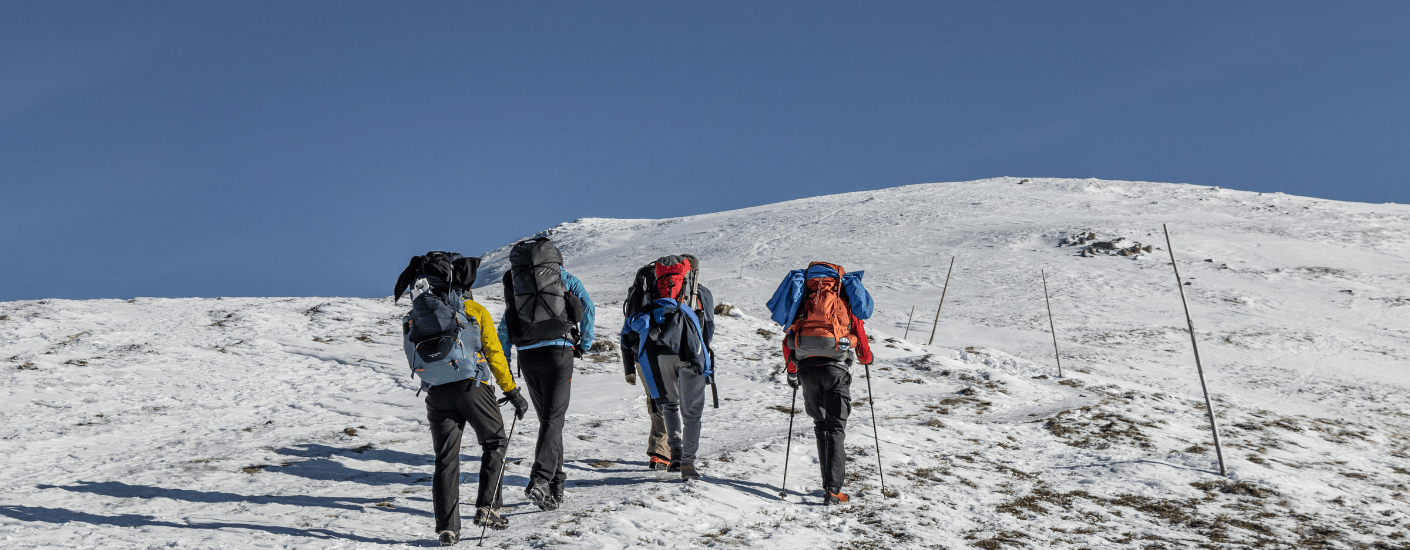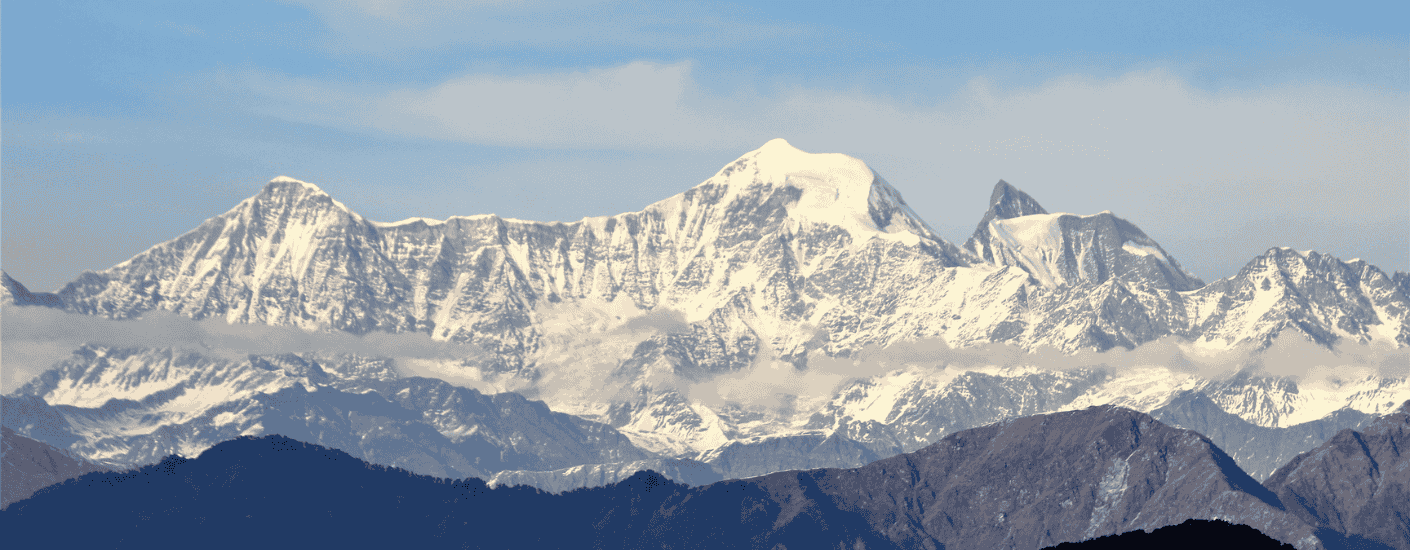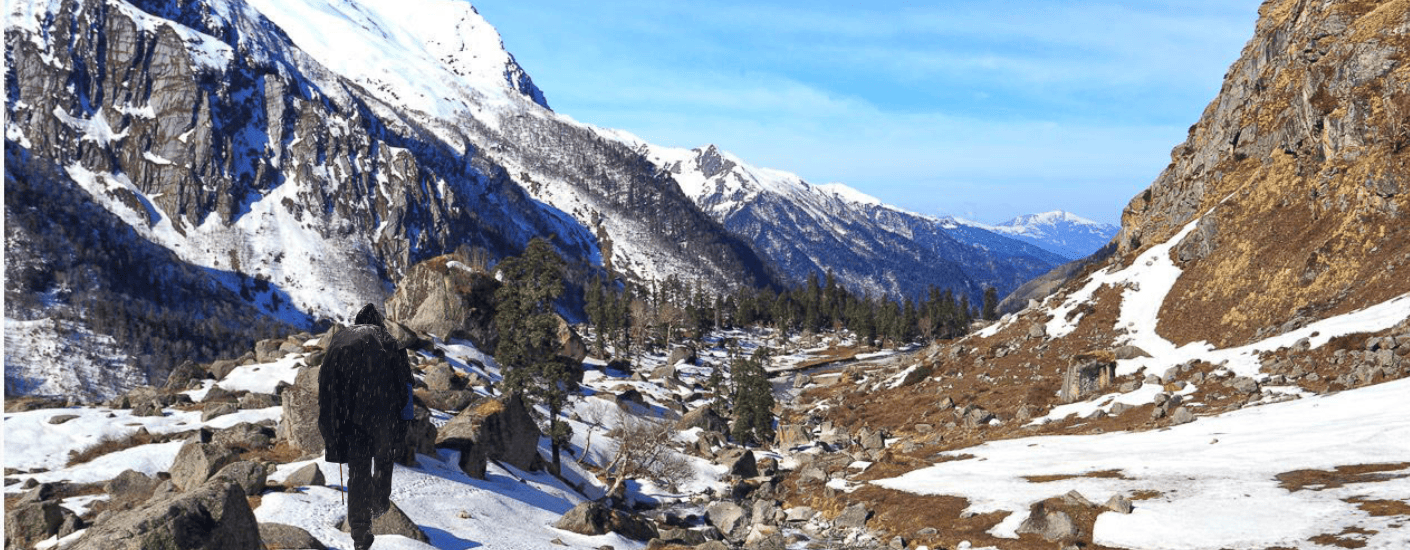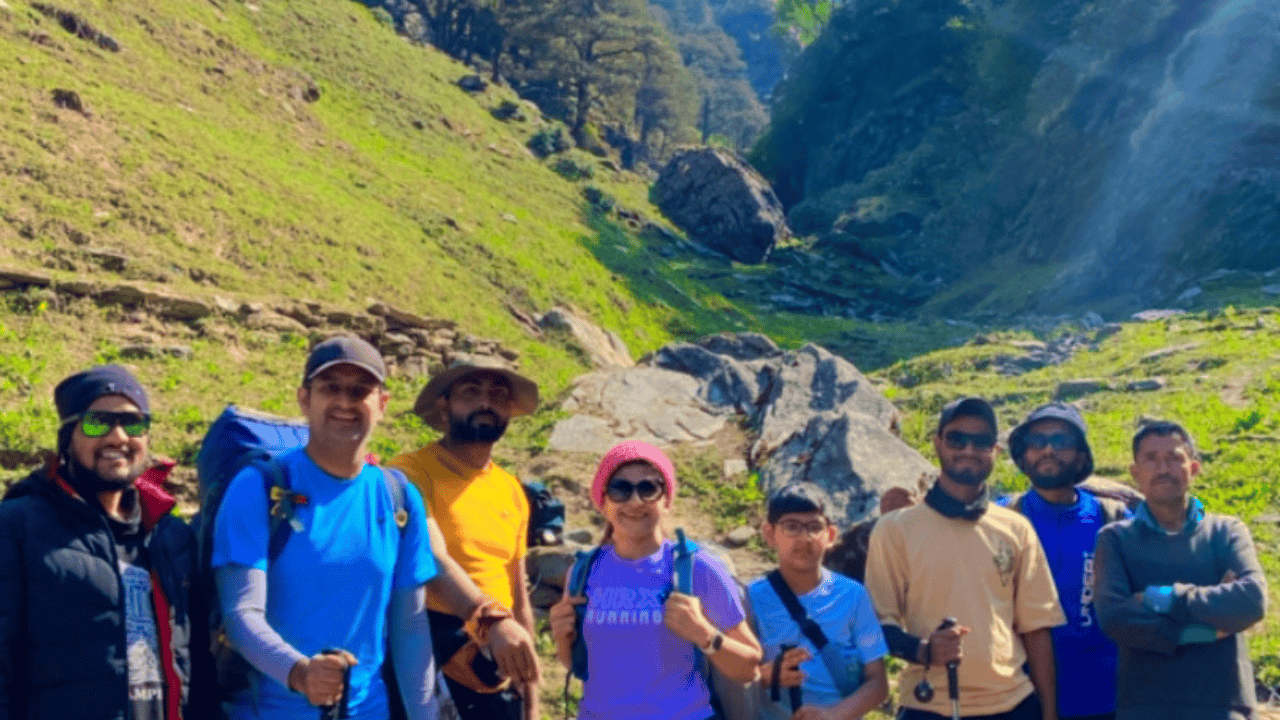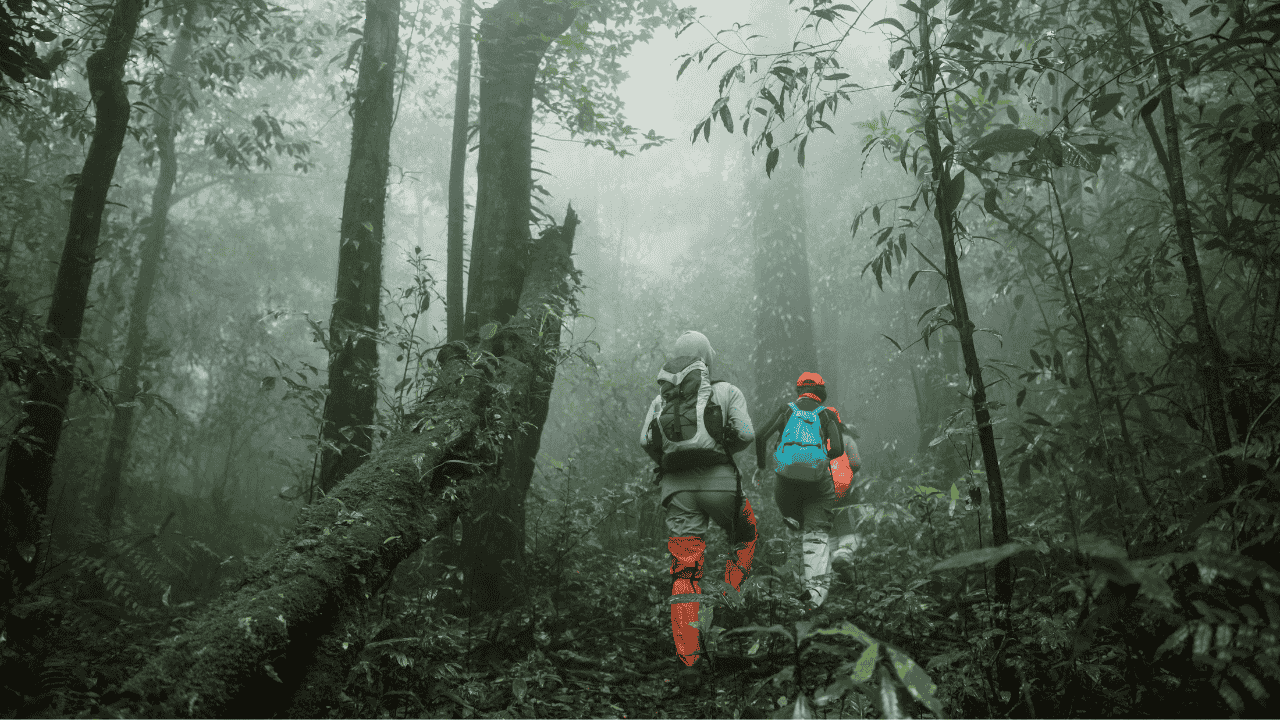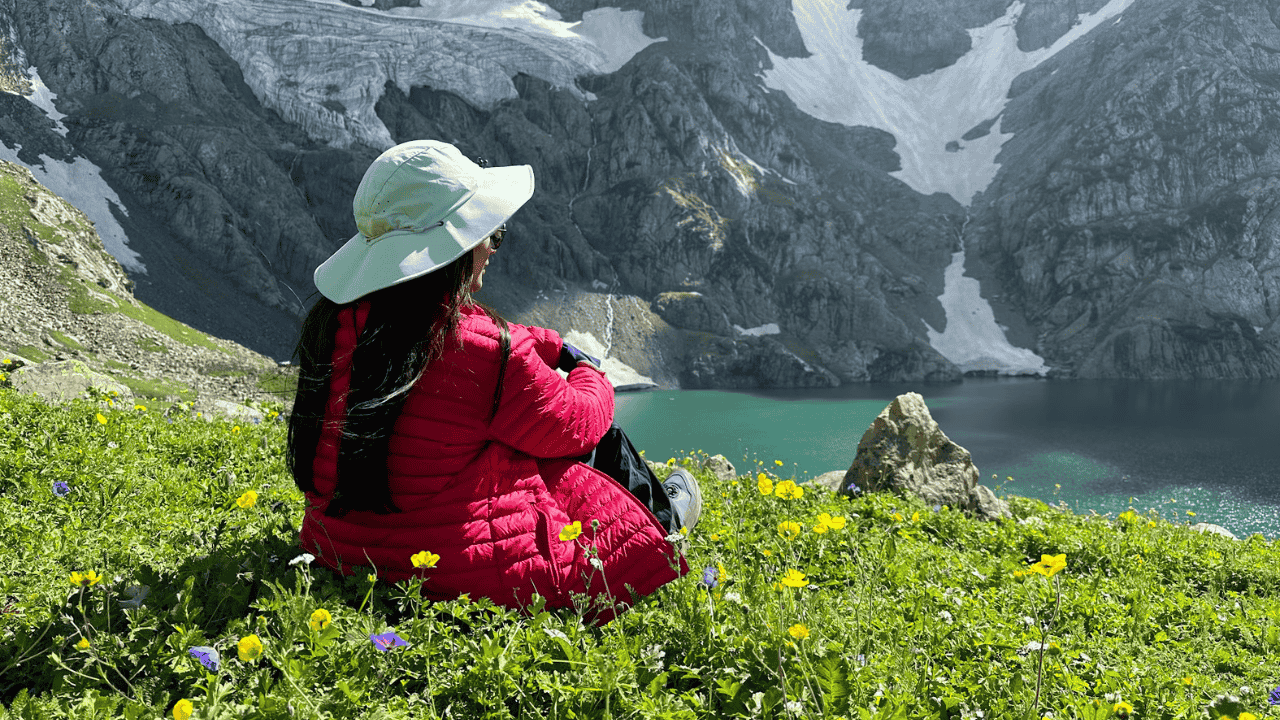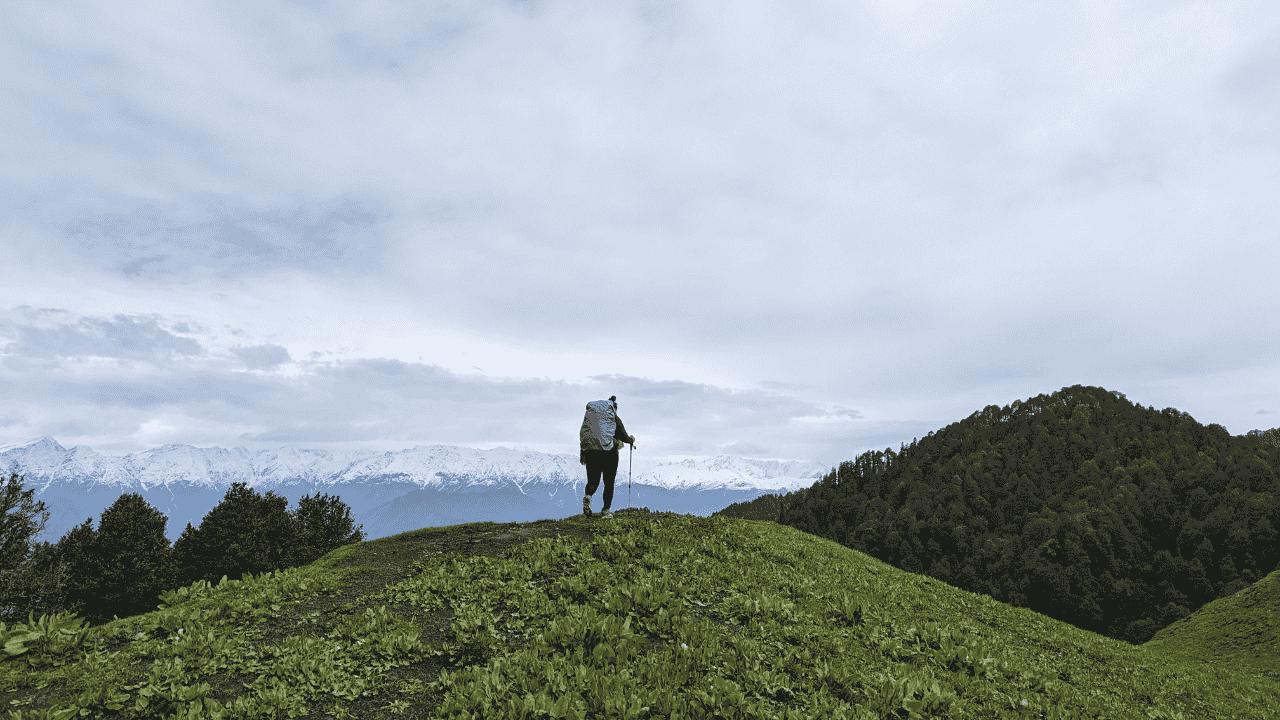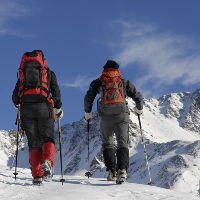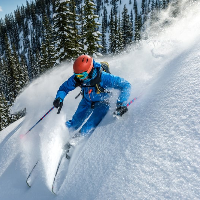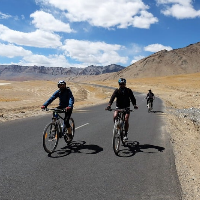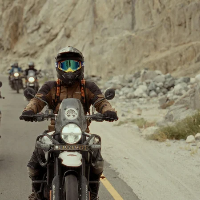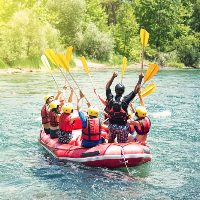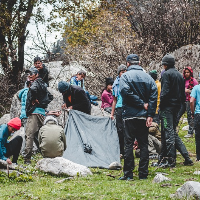Itinerary Description
The Chadar Trek in Ladakh is the ultimate adventure for those drawn to extremes—icy landscapes, biting cold, and unpredictable conditions. This extraordinary journey takes you across the frozen Zanskar River, where the "Chadar," or blanket of ice, varies from milky white to translucent sheets, creating the surreal sensation of walking on water. Though the trek has minimal elevation changes, mastering the icy terrain and enduring temperatures that can plunge to –30°C demands patience and resilience over the 9-day itinerary.
Your adventure begins with essential acclimatization in Leh, building strength and preparing your gear for the harsh winter ahead. From Leh, a scenic drive leads you to Tilado, where you first set foot on the river’s frozen surface, trekking through narrow gorges and towering cliffs. Each day reveals the ever-changing ice formations and breathtaking, untouched beauty of the Zanskar valley. Along the way, you encounter local inhabitants whose daily lives revolve around this frozen river, offering profound cultural insights alongside nature's grandeur.
Every day presents new surprises, broken ice patches, and shifting conditions that test your agility and spirit. The journey is both a physical challenge and a cultural immersion, enveloped by vibrant colors, icy air, and the silent majesty of the Himalayas. January is the prime time to embark on this once-in-a-lifetime trek, promising exhilarating experiences and stories that will stay with you forever.
Short Itinerary
Arrive in Leh (3,500 Mts)
Rest and Acclimatization in Leh (3,500 Mts)
Rest and Acclimatization in Leh (3,500 Mts)
Drive from Leh (3,500Mts) to Tilado (3,215Mts ) 65 km (3 to 4 hours) and trek to Shingra Yokma (3,300Mts) 3 km Approx.(2 to 3 hours)
Trek from Shingra Yokma (3,300 Mts) to Shingra Koma (3,200 Mts) 6 km Approx. (4 to 5 hours)
Trek from Shingra Koma (3,200 Mts) to Tsomo Paldar (3,300 Mts) 6 km Approx. (4 to 5hours)
Tsomo Paldar (3,300 Mts) to Shingra Yokma (3,300 Mts) 12 km Approx.(7 to 8 hours)
Shingra Yokma (3,300 Mts) to Tilado (3,300 Mts) 3 km (2 to 3 hours) and drive to Leh (3,500 Mts) 65 km (3 to 4 hours)
Departure from Leh
Detailed Itinerary
Day 1
Arrive in Leh (3,500 Mts)
The trek starts from Leh, which is a headway into Ladakh that is home to some of the highest peaks in the region. Because the roads are shut, the only way to get to Ladakh in winters is through air. There are flights that fly into Leh through Delhi and this two hour journey is where the magic begins. Try to get a window seat on the plane for the bird’s eye view of the Himalayas is absolutely mesmerizing. Day one is reserved for you to make your way to Leh and get settled into your accommodation. Since you will be coming to this altitude from sea level, the body will need time to get comfortable with the altitude and the mountain air. Winters in Leh are quite harsh but the cold you experience here is only just the beginning!
Day 2
Rest and Acclimatization in Leh (3,500 Mts)
Day two is reserved for rest and acclimatization to the altitude, too. This is important to allow your body to adapt to its new environment and reduce chances of adverse health conditions. You can go around and explore the city market, delve into the colors and culture of this high-mountain city and visit some places nearby. A little movement around the city would be good for acclimatization. Also, use this time to go through your checklist and do some last-minute shopping for what you might be missing for the trek. Leh has the best market for trekking essentials. While the body acclimatizes, we take this time to get together with the group for a debriefing session where we get to know each other better and delve into the happenings of the next few days - schedule, what to expect, basic do's and don'ts in the mountains, how to maintain the sanctity of the environment and other such matters of importance.
Day 3
Rest and Acclimatization in Leh (3,500 Mts)
Day 3 is also reserved to adapt to the cold winters of Leh. The only other thing on the agenda is a mandatory medical check-up at the Tourist Information Centre which is essential to obtain a NOC from ALTOA and a permit from the Wildlife Department to trek on Chadar.
Day 4
Drive from Leh (3,500Mts) to Tilado (3,215Mts ) 65 km (3 to 4 hours) and trek to Shingra Yokma (3,300Mts) 3 km Approx.(2 to 3 hours)
The day starts with a scenic drive from Leh towards the Zanskar valley, following the Indus River and then turning into the narrow gorge road that leads to Tilado. As the landscape tightens into steep cliffs and frozen side-streams, you get your first feel of Ladakh’s winter wilderness before reaching the roadhead near Tilado at around 3,215 m. From here, you put on your trekking boots and step down onto the frozen Zanskar, beginning a gentle 3–4 km walk over the ice to reach Shingra Yokma, your first campsite on the river. The route introduces you to mixed ice conditions—glass-smooth patches, powdery sections and broken “chadar”—and your guides demonstrate safe ways to test the surface and navigate around fragile spots.
Day 5
Trek from Shingra Yokma (3,300 Mts) to Shingra Koma (3,200 Mts) 6 km Approx. (4 to 5 hours)
Leaving Shingra Yokma after a warm breakfast, you continue deeper into the Zanskar gorge towards Shingra Koma. The trail follows the meandering frozen river, flanked by towering rock walls that sometimes rise almost vertically from the ice, creating a spectacular corridor of stone and snow. Over 5–6 km, you refine your rhythm on the chadar—short steps, balanced posture, and careful footing—while observing constantly changing ice patterns, occasional open-water sections near bends, and the play of light on the canyon walls. Shingra Koma, around 3,200 m, serves as a beautiful riverbank campsite where you settle into expedition routines of pitching tents, warming up by the kitchen area, and preparing for another cold night under the stars.
Day 6
Trek from Shingra Koma (3,200 Mts) to Tsomo Paldar (3,300 Mts) 6 km Approx. (4 to 5hours)
Today’s walk from Shingra Koma to Tsomo Paldar is often remembered for its dramatic ice formations and quiet ambience in the gorge. The route stays on or near the frozen river bed, where layers of ice can appear like frozen ripples, crystal-clear glass sheets, or milky white plates stacked over each other. Over 5–6 km, you move at a steady pace, stopping regularly to navigate around broken sections, skirt narrow ledges, or briefly climb along the rocky banks when the chadar is thin. By the time you reach Tsomo Paldar at around 3,300 m, you have fully settled into the rhythm of winter trekking—layer management, staying hydrated in the cold, and quickly slipping into warm sleeping bags as temperatures drop sharply after sunset.
Day 7
Tsomo Paldar (3,300 Mts) to Shingra Yokma (3,300 Mts) 12 km Approx.(7 to 8 hours)
This is a long and rewarding day as you retrace your route from Tsomo Paldar back to Shingra Yokma, covering nearly double the distance of the previous days. Starting early, you follow the familiar bends of the river, but the chadar often looks different because temperature changes can alter ice thickness, color, and texture overnight. The 11–12 km walk typically takes 7–8 hours, giving you ample time to appreciate how confidence and efficiency on the ice have grown—your steps are more stable, breaks are better timed, and you read the surface more intuitively. By evening you reach Shingra Yokma, where the camp feels almost home-like after completing a major stretch of the frozen Zanskar.
Day 8
Shingra Yokma (3,300 Mts) to Tilado (3,300 Mts) 3 km (2 to 3 hours) and drive to Leh (3,500 Mts) 65 km (3 to 4 hours)
The final walking section of the trek takes you from Shingra Yokma back towards Tilado over an easy 3–4 km on the chadar. This shorter day allows you to enjoy every last step on the frozen river, take photographs, and bid farewell to the gorge that has hosted you for the past few days. On reaching Tilado, you climb up from the river to meet the waiting vehicles and drive approximately 65–70 km back to Leh, once again tracing the route along the Indus and through rugged Ladakhi landscapes. By late afternoon or evening, you check back into your hotel in Leh, where hot showers, warm beds, and a celebration dinner mark the successful completion of the Chadar Trek.
Day 9
Departure from Leh
The trek ends here. If you plan to stay for a few more days to explore the wonders of Ladakh, the article below might help start you off on what places to consider. Like we indicated before, the weather on high-altitude is unpredictable as are many other conditions. We would suggest you keep spare days between the end of the trek and your travel arrangements to head back home.
WHAT'S INCLUDED
- ●Meals during the trek (Starting Lunch on Day 4 till lunch on day 8 )
- ●Forest Permits/Camping Charges, if any (Up to the amount charged for Indian nationals)
- ●Day 1,2,3 and day 8 nights guest house stay in Leh on twin sharing basis
- ●Tents on twin sharing basis, Sleeping bags, mats
- ●Safety Equipment includes static rescue rope, seat harness, carabiners, pulleys
- ●Services of an experienced Trek guide, cook, helpers.
- ●Porters or mules for carrying common supplies
- ●Mountaineering course certified Trek Leader with First Aid certification
WHAT'S NOT INCLUDED
- ●Meals during hotel stay in Leh
- ●Any expenses incurred on medical examination in Leh
- ●Gum Boots will not be provided by us. Please carry your own Gum Boots or buy the same in Leh.
- ●Inner Line Permit Fee
- ●Any kind of personal expenses
- ●Cost of any kind of Insurance. Since insurance is mandatory, kindly get yourself insured from our partners ASC360 through www.asc360.com
- ●Portage of personal luggage
- ●Anything not specifically mentioned under the head price Includes
- ●Altoa & Environmental / Wildlife Permit Fee. Approx Charge 6k to 8k to be paid on the spot to the authorities
Are you eligible for this adventure?
Annapurna Base Camp Trek takes you to a height of 4,130M and is rated a moderate level trek for its long trekking distances. For its elevation and distances, it is recommended for trekkers with some prior experience in the high-altitudes.
Grade
Difficult
Max Altitude
3500 mts
Distance
30 km

WMRS Level Required

Terrain

Prerequisite Skills

Fitness Benchmark
WMRS Level Required
WMRS 5
Annapurna Base Camp Trek is a level 4 adventure on the Bikat Rating Scale.
This makes it mandatory for you to have high-altitude experience of preferably multiple treks marked at level 3 on the WMRS. The altitude, the terrain, and the nature of the climb demand a certain level of endurance and a need for you to be aware of how your body reacts to the various features of the high-altitude environment.
If you do not know what level of WMRS trek would suit you best, worry not! Fill out this Form:
We will send you a progression chart to help you comfortably get out of your comfort zone in order to level up and ultimately reach your highest potential in the big, bad world of outdoor adventure.
Packing List
This is a list of essential items for individuals going on a trek with Wanderin’ Man Adventures. This list contains only those items which the participants are required to bring with them. The list excludes those items which are provided by Wanderin’ Man Adventures on the trek. We have divided the items into five categories. All the items in the list are essential except for those marked as optional.
🟩 Trekking Gear
- Rucksack bag with rain cover
- Day Pack Bag - Recommended for treks with summit day
- Head Torch with spare Batteries
- UV protection sunglasses
- Water Bottles - 2 bottles of 1 liter each
🟩 Footwear
- Non-skid, deep tread, high-ankle trekking shoes - 1
- Pair of light weight Slipper/Sandals for the campsite - 1
🟩 Clothing
- Quick Dry Warm lower or Track Pants - 2
- Full sleeves T-shirts/Sweatshirts (1 for every 2 days of trekking)
- Pair of thick woolen socks (1 pair for every two days of trekking)
- Thermal Body warmer Upper & Lower - 1
- Undergarments (1 for each day of the itinerary)
- Warm jacket closed at wrist & neck - 1
- Full sleeves sweater - 1
- Rain wear (Jacket & Pants) - 1
- Pair of water-proof, warm gloves - 1
- Woolen cap - 1
- Sun shielding Hat - 1
- Multipurpose Buff - 2
🟩 Toiletries
- Personal toiletries kit (Small Towel, Toilet paper, paper soap, Bar soap, toothbrush, toothpaste, cold cream, etc.)
- Sun screen lotion small pack (SPF 30 & Above) - 1
- Lip Balm small pack - 1
🟩 Utensils
- Small size, Lightweight & Leak proof lunch box - 1
- Plate - 1
- Spoon - 1
- Tea/Coffee (plastic) Mug - 1
🟩 Miscellaneous
- Camera (Optional)
- Carry your medicines in plenty in case you have any specific ailment. Consult your doctor before joining the trek.
- Dry fruits, Nuts, Chocolate bars (Optional)
Note-
- For long treks, please carry a spare sunglasses.
- For winter trek please try to carry a thermal water bottle.
- For long winter treks, please carry an extra pair of warm pants.
Frequently Asked Questions
Why Wanderin Man?
(SET- Safety, Expertise & Trust )

Safety
- ●Small Group Size in the ratio of 6:1 (participant to leader)
- ●No compromise on safety and sustainability promise
- ●Experienced and Certified Mountaineering Professional Leaders
- ●Region Mapped with Emergency Evacuation Plan
- ●Certified Standard Equipment by UIAA (International Climbing and Mountaineering Federation certification) & other Similar Bodies
- ●Minimized Risk Management Standard Operating Procedure are applied for every Trek and tour
- ●Certified First Aid Support and Doctors* with constant availability of Safety Equipments like Medical Kit, Rescue Kit
- ●Constant communication is aided with the help of Communication Devices
- ●Certified and registered Transporter for transportation purpose

Expertise
- ●Founders of the company have extensive experience of 15 years having organized approx 2000+ trekking, Expeditions and other adventure activities.
- ●Wanderin’ Man Adventures operating expeditions above 8000 mts.
- ●Under the umbrella of Wanderin’ Man Adventures 15 + adventure activities Programs have been organized
- ●Founders have mountaineering certifications from the esteemed mountaineering institutes of India.
- ●Team is composed of experienced mountaineers and trek leaders with thorough understanding of norms and procedures.

Trust
- ●Trust has been the hallmark of our company since its inception be it any program on the list.
- ●Special emphasis is laid on the use of standard procedures and equipments as per the mountaineering norms
- ●95% of our clients have availed our service on repeat basis.
- ●Our business has expanded primarily based on the “word of mouth” from our existing clients to new ones
What Our Customers Say
Cancellation Policy
Cash Refund (All events including Friendship Peak Expedition except other Mountaineering Expeditions) - Cash refunds are only available for bookings made without any discounts, such as promotional codes or dynamic discounts. Additionally, cash refunds are not available for shifted batch bookings or if the booking status is "Booked". The amount of the refund will be determined based on the following guidelines:
Cancellations made up to 45 days before the departure date
Cancellations made up to 31 days before the departure date
Cancellations made between 30 and 21 days before the departure date
Cancellations made between 20 and 11 days before the departure date
Cancellations made less than 11 days before the departure date are not eligible for a cash refund.
Similar Adventures
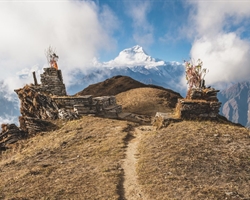
Khopra Ridge Trek
Less popular, less crowded, more beautiful alternative to ABC
- Nepal
- 10 Days
- BRS 4
- 4767 m
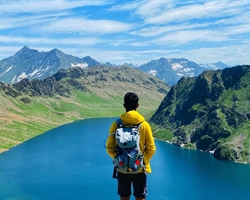
Tarsar Marsar Trek
A Shorter and Easier Alternative to the Kashmir Great Lakes Trek
- Kashmir
- 7 Days
- BRS 4
- 4024 m

Hampta Pass Trek
An Enchanting Cross-Over from Manali to Spiti
- Himachal
- 5 Days
- BRS 4
- 4200 m
 Max Participants :
15
Max Participants :
15
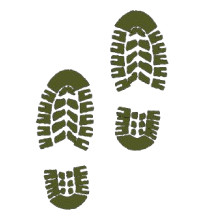 Trail Type :
Starting and ending at the same point
Trail Type :
Starting and ending at the same point
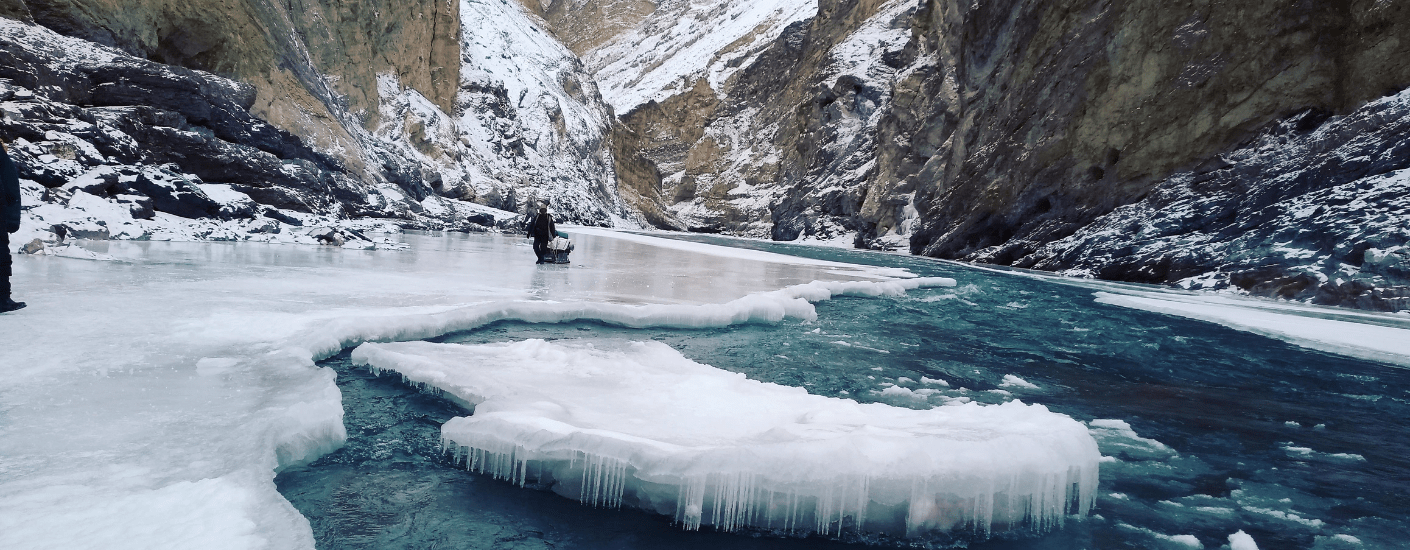

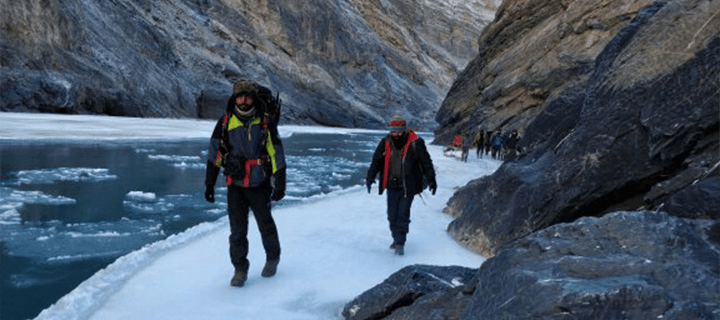
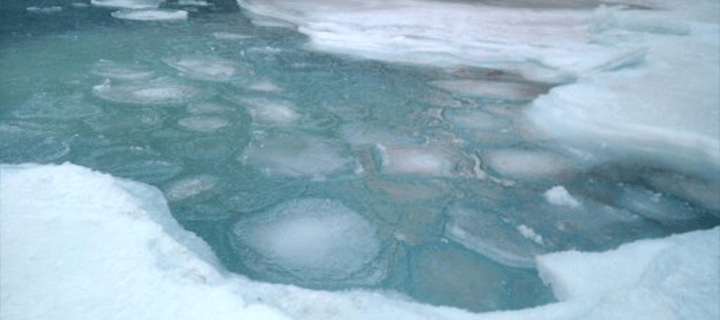
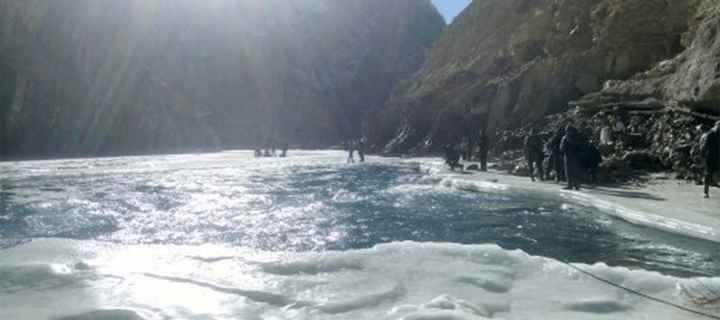
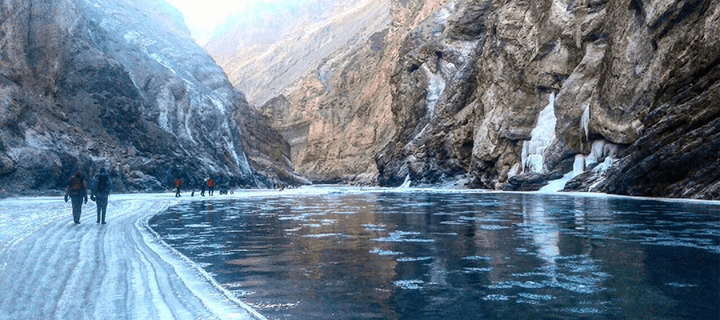


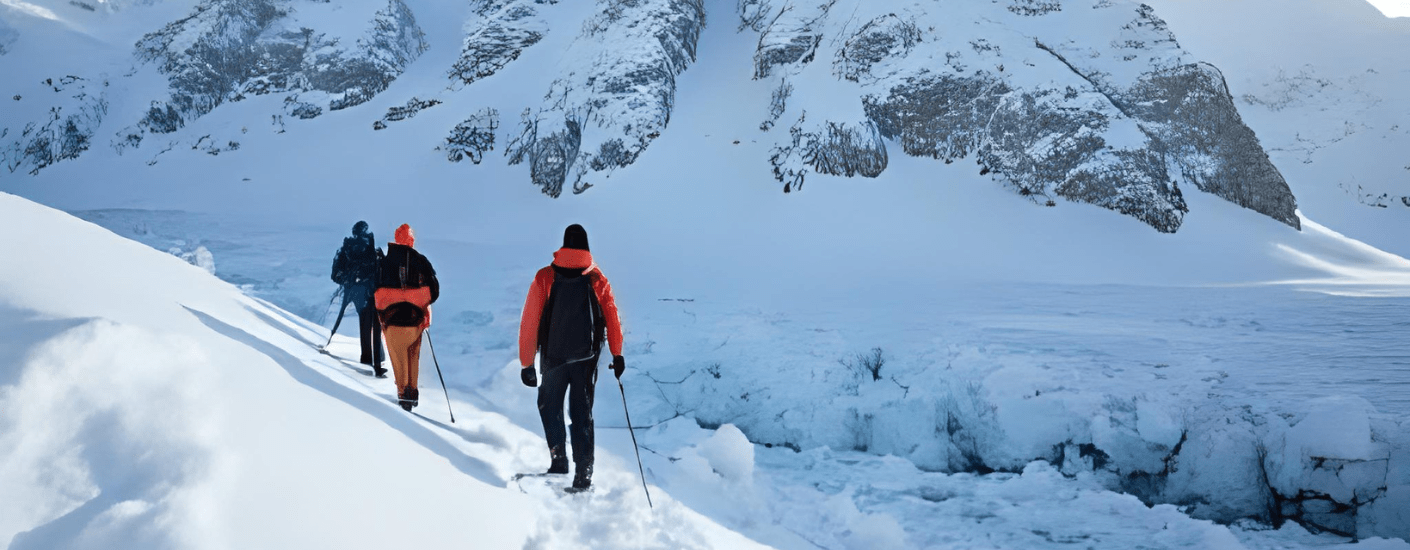
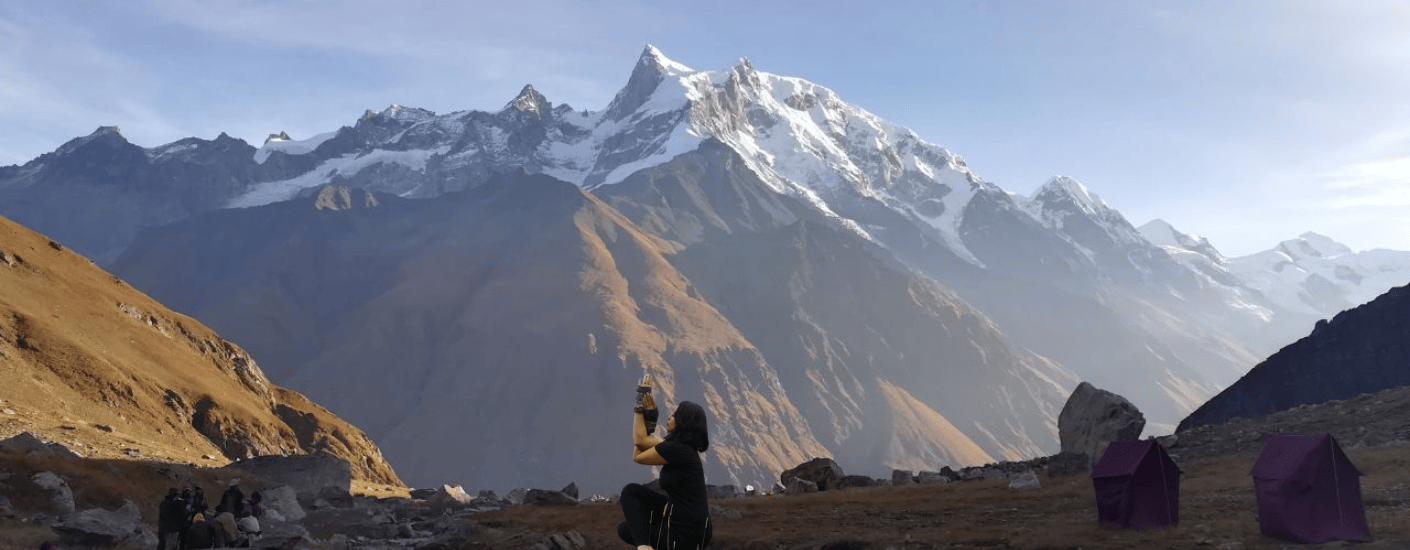

.png)
